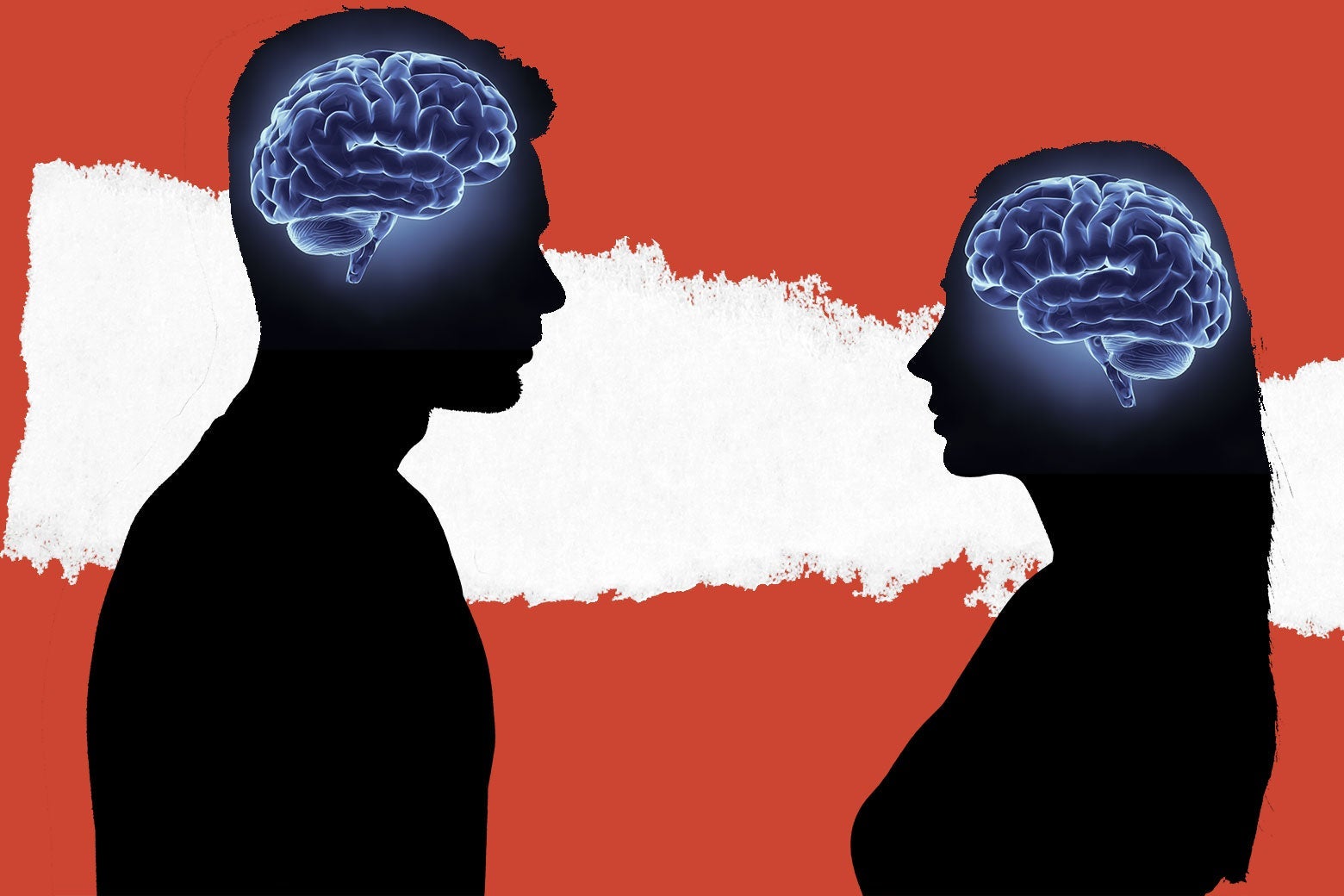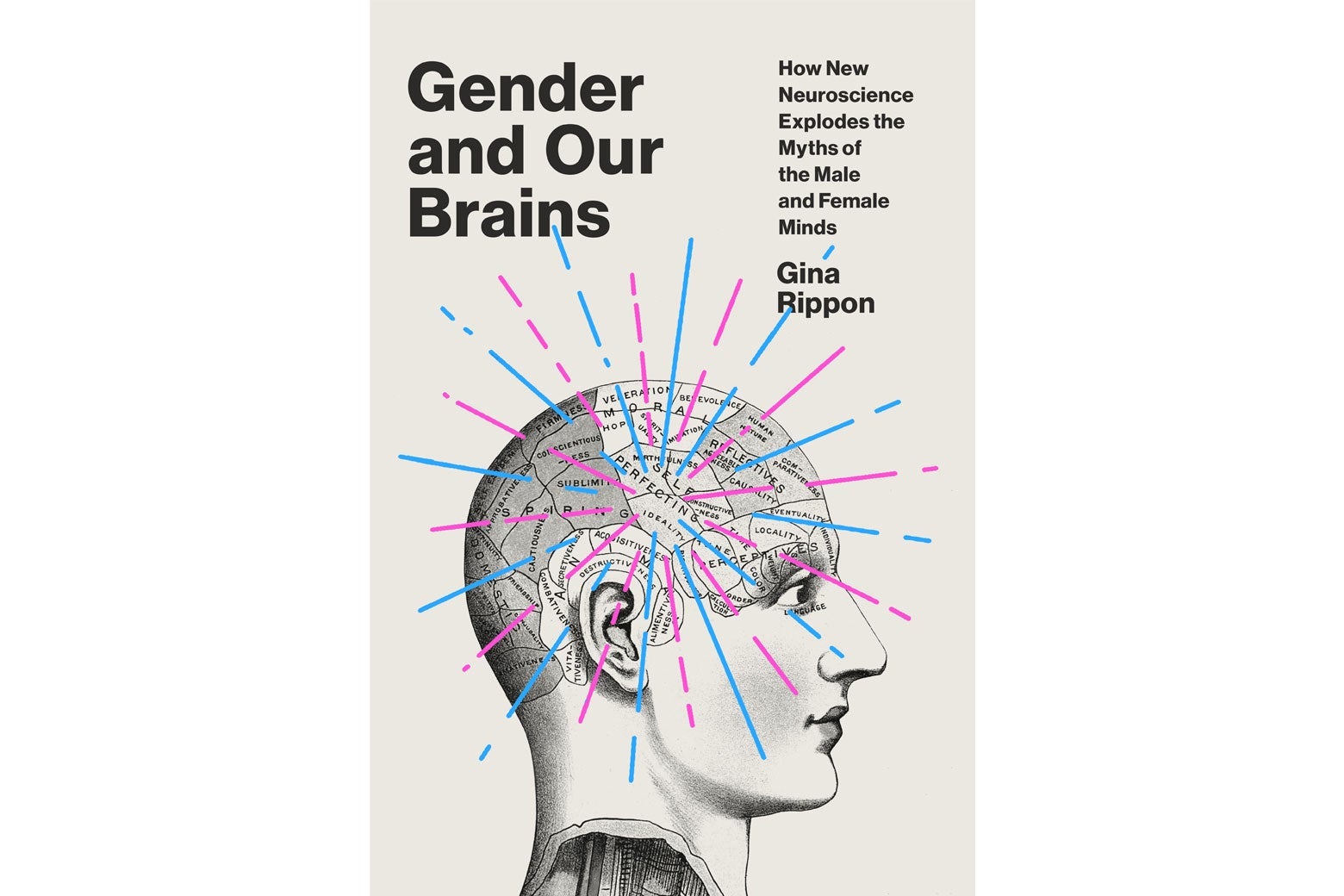Sarcasm is a rare and underappreciated mode in science writing, which tends toward wonderstruck lyricism or, when the situation demands it, sober concern. But sarcasm is exactly the tone called for when your subject is centuries of flimsy scientific research designed by men to “prove” that you, and 50 percent of the human population, are inferior. Of all the bracing virtues in Gina Rippon’s Gender and Our Brains: How New Neuroscience Explodes the Myths of the Male and Female Minds, Rippon’s sarcasm is surely the most savory. Rippon, a professor emeritus of cognitive neuroimaging at Aston University in the U.K., argues that the extent and significance of the biological differences between the brains of men and women have been greatly exaggerated by generations of scientists and, especially, by the popular press. In recent years, developments in her own discipline, particularly fMRI imaging, have been used to bolster pronouncements about the inherent distinctions between the “male” and “female” brain, even when the evidence for such conclusions is rickety. This ticks Rippon off.
Her response is to dissect the shortcomings of these various studies with a withering, pragmatic scorn that reads a bit like a secretly recorded trash-talking session in a lab break room. And Rippon has plenty of grist for her mill. Going all the way back to the 18th century, when science began to replace scripture as the preeminent authority for many Westerners, Rippon describes how researchers began looking to the brain to justify the different social roles assigned to men and women and the behaviors encouraged in each. She calls this approach “an area of entrenched opinion” that “has been the ongoing focus of just about every research discipline from genetics to anthropology, mixed with history, sociology, politics and statistics.” The scientists who produced this work started with an assumption (that women and men have distinct destinies as ordained by nature, rather than God) and set out to find the evidence to prove it. Lo and behold, they discovered just what they were looking so hard for—except when they didn’t and had to hurriedly change the rules.
Brain size was a key focus of this theoretical fancy footwork. Men, on average, have larger brains than women, and this was deemed to be the source of men’s obviously superior mental abilities. However, it turned out that brain size varies with body size, and, as John Stuart Mill pointed out, “a tall and large-boned man must on this showing be wonderfully superior in intelligence to a small man and an elephant and a whale must prodigiously excel mankind.” Attempts to adjust the comparison for variations in body size, as Rippon relates, “didn’t come up with the ‘right’ answer either.” By such calculations, the Chihuahua, whose brain is enormous relative to its body, should be the most intelligent breed of dog. (“This is known in the business as the Chihuahua paradox,” writes Rippon, in just one of many quips that make an endearingly dorky counterpoint to her disdain for poorly conducted research and slanted conclusions.)
Women weren’t the only people targeted by this sort of research. In the late 19th century, a property called “orthognathism,” which could be judged by the angles in a human profile, was seized upon to prove that European males were superior in intelligence to central Africans, who were in turn better than orangutans. Then, disaster struck: “Women, on average, turned out to be more orthognathic than men,” Rippon reports. But “fortunately, help was at hand”: An anatomist figured out that children, too, had exaggerated orthognathism, demonstrating that women were actually just overgrown kids. Crisis averted! In one particularly embarrassing 19th-century incident, a sophisticated volumetric formula was used to calculate the skull capacity of students of both genders, as well as 35 leading members of the Anatomical Society in Dublin. But (oops!) several of the anatomists turned out to have relatively diminutive brain pans. “The discovery that these eminent men’s heads were on the smaller side,” Rippon writes, “magically created a large number of instant converts to the conclusion that linking skull capacity to intelligence was obviously ludicrous.”

Of course, present-day neuroscience is not based on any of these theories, but that’s not Rippon’s point. She presents this history to demonstrate how fraught with bias the long search for brain-based gender differences has been. Even when they believe themselves to be objective, today’s researchers can be as lacking in self-awareness about their own prejudices as scientists of the past.
Simon Baron-Cohen, a psychologist who originated the “extreme male brain” theory of autism, has proposed that human brains are “male” or “female” to the extent that they predominate in one of two traits: systematizing or empathizing. Baron-Cohen, as quoted by Rippon, wrote that “people with the female brain make the most wonderful counselors, primary-school teachers, nurses, carers, therapists, social workers, mediators, group facilitators, or personnel staff,” whereas those with systematic male brains “make the most wonderful scientists, engineers, mechanics, technicians, architects, electricians, plumbers, taxonomists, catalogists, bankers, toolmakers, programmers, or even lawyers.” This type of patronizing rationale for relegating men and women to specific roles typically claims that the two sexes complement each other in their innate aptitudes. It also pretends not to privilege one type of brain over the other. But, as Rippon remarks, “no points for guessing who ends up earning a higher salary in this scenario.”
Rippon was dismayed when her own area of expertise, cognitive neuroimaging, was portrayed by the popular press throughout the past decade or so as validating the idea that men’s and women’s brains are fundamentally different. She debunks what she calls “neurotrash,” the many misunderstandings and misrepresentations of what fMRI imaging—which measures and represents increased blood flow to areas of a subject’s brain—reveals. Contrary to what early coverage of brain imaging technology claimed, neuroscientists no longer believe that specific types of activities and aptitudes are dealt with solely in discrete parts of the brain. Instead, the brain is a network of networks. It is also extremely “plastic,” constantly changing to reflect whatever its owner experiences and does. Areas apparently associated with specific functions (such as spatial orientation—a brain region that, as one famous study found, is hyperdeveloped in London cab drivers) may increase or decrease in size or be recruited to perform different functions to compensate for damaged areas. Rippon never denies that there are a few apparently biologically based gender differences in cognitive function: Men, for example, consistently perform better on mental rotation tests that require them to picture a 3D object turning in imaginary space. But even these settings are constantly being tweaked by how a brain is used, as a study that assigned a group of teenage girls to play lots of Tetris over a three-month period demonstrated; the areas of their brains associated with “visuospatial processing” became enlarged. It makes no sense, Rippon argues, to speak of brains as fixed organs when they can be changed literally at will.
Much of the rest of Gender and Our Brains describes how exquisitely sensitive to social input the brain is—especially in infancy and childhood—and how pervasively gendered that input is. “A gendered world will produce a gendered brain,” she writes. The night Rippon’s own daughter was born, several other mothers in the maternity ward gave birth to boys. When the wailing infants were brought in to their mothers, one boy was handed over with admiring remarks about “a cracking pair of lungs” while the nurse who passed on her daughter declared the girl “the loudest of the lot. Not very ladylike.” (You have to pity the fool who’d say something like this to Rippon, of all people, but, sadly she doesn’t report her own response.) Babies are “sponges,” Rippon argues, and even when parents believe that they are raising their kids in a gender-neutral environment, they are constantly and unwittingly transmitting stereotypes. In one study, though 65 percent of the parents of 5-year-old boys insisted they would have no problem with buying their sons a doll, only 9 percent of the boys agreed.
Slate has relationships with various online retailers. If you buy something through our links, Slate may earn an affiliate commission. We update links when possible, but note that deals can expire and all prices are subject to change. All prices were up to date at the time of publication.
This part of the book feels pretty familiar, particularly the chapters that assess the many social and personal barriers that keep women from entering STEM fields. There are evolutionary psychology’s flights of pseudoscientific fantasy, such as a study proposing that pink is associated with girls and women because their primeval ancestors needed to be extra sensitive to reddish colors when foraging for berries. (The custom dates no further back than the 19th century.) There is James Damore’s infamous memo challenging diversity training at Google and the many scientists—including some of those whose research he cited—who debunk his argument that the “limits of biology” prevent women from excelling at the sort of systematizing skills that would allegedly help them succeed at the company. Like Cordelia Fine, author of the 2010 book, Delusions of Gender, Rippon argues that the way human beings are shaped by the social feedback loop we tap into from the moment we enter the world makes it impossible to ascertain what portion of the ultimately slight measurable differences between men and women on average is due to purely biological factors. Yet we fixate on these differences, instead of embracing the far greater potential for change embodied in our own neural plasticity.
Rippon isn’t the writer Fine is—she repeats such clauses as “beautifully color-coded images” as often as Homer refers to the “wine-dark sea.” But this, in its fashion, lends credibility to Gender and Our Brains. Rippon writes like a scientist, not a psychologist or philosopher. She makes an irascible but very down-to-earth guide through the thickets of such statistical properties as effect sizes and how they have been manipulated or ignored. And while she certainly deplores the likelihood that stereotypes about women’s deficiencies in “systematic” thinking will steer many possibly gifted scholars away from STEM fields, Rippon is no solemn moralizer weeping over the sufferings of the downtrodden. (It’s a relief, for a change, not to have those particular heartstrings plucked yet again.) Instead, she is exasperated and impatient at how steadfastly so many of her colleagues have pursued a point so fine it nearly vanishes from sight, how blind they are to the evident biases in their own ideas and work, and how very deeply invested they are in the status quo.

